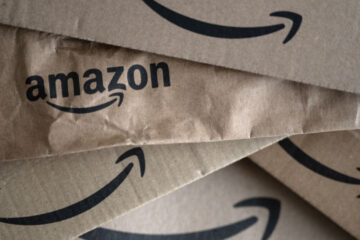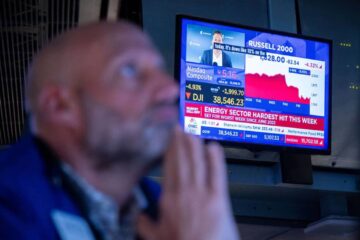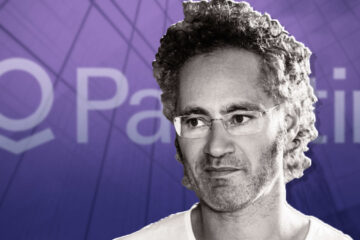Over the past few months, PepsiCo (PEP) , which owns popular food and drink brands such as Pepsi, Lay’s, Gatorade, Tostitos, Quaker, and more, has suffered from weaker consumer demand, which has negatively impacted its profits.
In PepsiCo’s first-quarter earnings report for 2025, it revealed that its net revenue declined by almost 2% year-over-year during the quarter. Specifically, PepsiCo foods in North America faced a 1% decrease in revenue, while volume for savory snacks shrunk by 4%.
💵💰Don’t miss the move: Subscribe to TheStreet’s free daily newsletter 💰💵
Also, the company’s U.S. revenue from its beverages remained flat as it faced a 6% decline in non-carbonated beverage volume and a 1% decline in carbonated soft drink volume.
Related: PepsiCo makes swift move to avoid major boycott from consumers
In the report, PepsiCo CEO Ramon Laguarta said that “consumer conditions in many markets remain subdued” and “have an uncertain outlook.” He said that the company will be “taking actions to improve performance in North America.”
PepsiCo is making efforts to keep price-conscious consumers engaged.
Image source: Bloomberg/Getty Images
PepsiCo CEO addresses customer pain points
During an earnings call on April 24, Laguarta said that PepsiCo will double down on offering lower prices to consumers through smaller-sized snack offerings as it recognizes that “consumers are feeling more challenged with their disposable income.”
“We’re putting more emphasis on those entry price points and making sure that we’re not asking for a large amount of money for participating in our brands, and that’s why smaller single-serve, smaller multi-packs, those are all tools for us to keep the consumers in the brand and make sure that the frequency is there as well,” said Laguarta.
He also said that, in response to recent concerns about the ingredients in PepsiCo products, several of the company’s brands will soon no longer contain artificial colors.
“Brands like Lay’s will be out of artificial colors by the end of this year, the same with Tostitos, so some of our big brands,” said Laguarta. “So we’re well underway. Ideally, obviously, we stand by the science, and our products are very safe, there’s nothing to worry about this. But we understand that there’s going to be probably a consumer demand for more natural ingredients, and we’re going to be accelerating that transition.”
Related: PepsiCo sounds alarm on major change in consumer behavior
Currently, over 60% of the company’s products doesn’t contain artificial colors. Laguarta said that within “the next couple of years,” all PepsiCo products will undergo a similar change.
“Ideally, we can do this in a very pragmatic, orchestrated way as an industry, and not create unnecessary panic or chaos,” said Laguarta. “But we’ll lead that transition, and in the next couple of years, we’ll have migrated all the portfolio into natural colors, or at least provide the consumer with natural color options, and obviously, every consumer will have the opportunity to choose what they prefer.”
The move from PepsiCo comes at a time when synthetic dyes such as Blue 1, Red 40, and Yellow 6, despite being approved by the U.S. Food and Drug Administration, have come under fire for being linked to health issues such as cancer and hyperactivity in children.
More Retail:
AT&T quietly issues stern warning to customers Sam’s Club makes a big change to a beloved membership perkGameStop announces risky move amid store closures
Robert F. Kennedy Jr., the U.S. secretary of Health and Human Services, announced on April 22 that he plans to ban artificial dyes from all U.S. food products by the end of the year.
“For too long, some food producers have been feeding Americans petroleum-based chemicals without their knowledge or consent,” said Kennedy in a recent press release. “These poisonous compounds offer no nutritional benefit and pose real, measurable dangers to our children’s health and development. That era is coming to an end.”
Previously, in February, Laguarta even warned that there has recently been a “higher level of awareness” toward health and wellness among U.S. consumers, which has impacted PepsiCo’s sales.
“We’re seeing more conversation in social media about health and wellness, in general, and obviously, that’s impacting consumption of food and consumption of beverages,” said Laguarta.
PepsiCo makes grim prediction about future sales
Amid low sales, PepsiCo expects its organic revenue to increase only by a low single-digit for the full year of 2025.
During the recent earnings call, PepsiCo Chief Financial Officer Jamie Caulfield said this expectation is based on the looming threat of tariffs (taxes companies pay to import goods from overseas), heightened macro and consumer uncertainty, and Frito Lay’s recent subdued performance.
“Relative to where we were three months ago, we probably aren’t feeling as good about the consumer now as we were a few months ago,” said Caulfield.
The guidance also comes as the company faces a massive boycott threat from consumers over its recent decision to scale back its diversity, equity, and inclusion program.
Related: Veteran fund manager unveils eye-popping S&P 500 forecast


